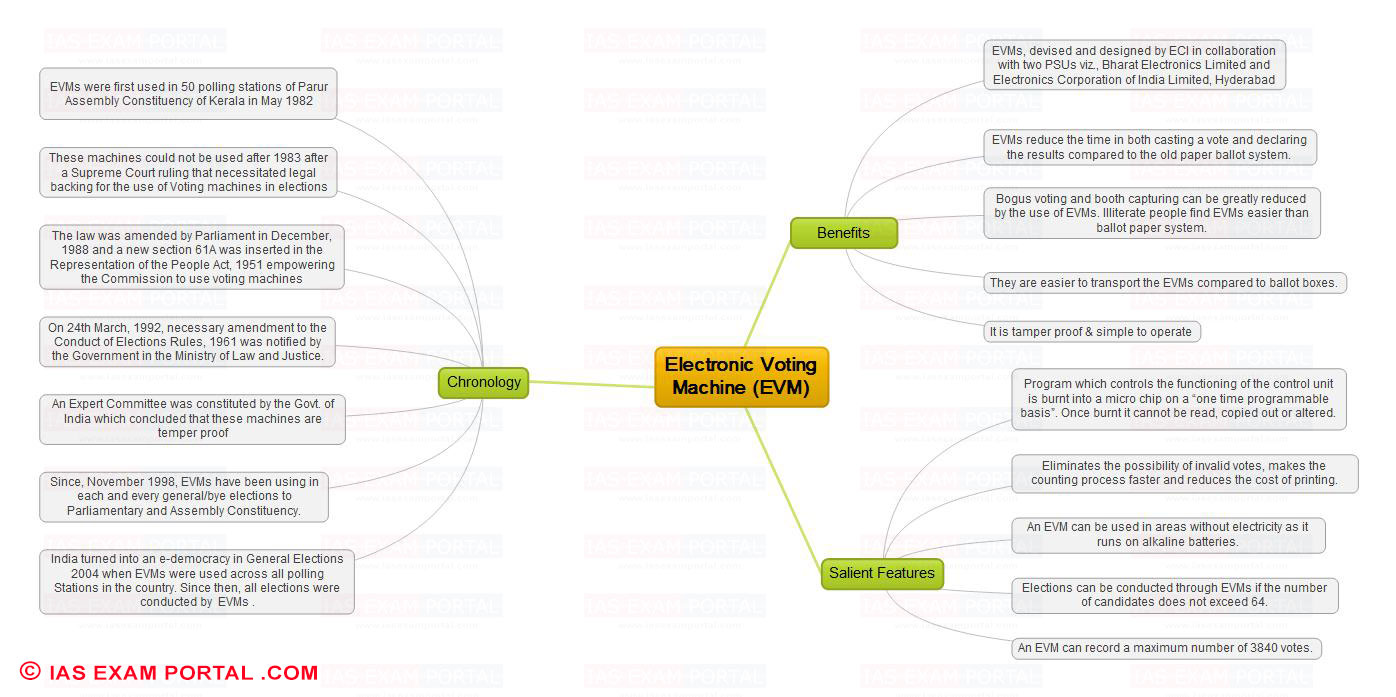(HOT) UPSC Current Affairs 2025 PDF
NEW! The Gist (NOV-2025) | E-BOOKS
Mind Map for UPSC Exam (Electronic Voting Machine)
Mind Map for UPSC Exam (Electronic Voting Machine)
Click Here to Download Full MAP in PDF
Study Material for IAS Prelims: GS Paper -1 + CSAT Paper-2
Online Crash Course for UPSC PRE Exam
Mind Map Important Topics:
Electronic Voting Machine
Chronology
- EVMs were first used in 50 polling stations of Parur Assembly Constituency of Kerala in May 1982
- These machines could not be used after 1983 after a Supreme Court ruling that necessitated legal backing for the use of Voting machines in elections
- The law was amended by Parliament in December, 1988 and a new section 61A was inserted in the Representation of the People Act, 1951 empowering the Commission to use voting machines
- On 24th March, 1992, necessary amendment to the Conduct of Elections Rules, 1961 was notified by the Government in the Ministry of Law and Justice.
- An Expert Committee was constituted by the Govt. of India which concluded that these machines are temper proof
- Since, November 1998, EVMs have been using in each and every general/bye elections to Parliamentary and Assembly Constituency.
- India turned into an e-democracy in General Elections 2004 when EVMs were used across all polling Stations in the country. Since then, all elections were conducted by EVMs .
Benefits
- EVMs, devised and designed by ECI in collaboration with two PSUs viz., Bharat Electronics Limited and Electronics Corporation of India Limited, Hyderabad
- EVMs reduce the time in both casting a vote and declaring the results compared to the old paper ballot system.
- Bogus voting and booth capturing can be greatly reduced by the use of EVMs. Illiterate people find EVMs easier than ballot paper system.
- They are easier to transport the EVMs compared to ballot boxes.
- It is tamper proof & simple to operate
Salient Features
- Program which controls the functioning of the control unit is burnt into a micro chip on a “one time programmable basis”. Once burnt it cannot be read, copied out or altered.
- Eliminates the possibility of invalid votes, makes the counting process faster and reduces the cost of printing.
- An EVM can be used in areas without electricity as it runs on alkaline batteries.
- Elections can be conducted through EVMs if the number of candidates does not exceed 64.
- An EVM can record a maximum number of 3840 votes.

